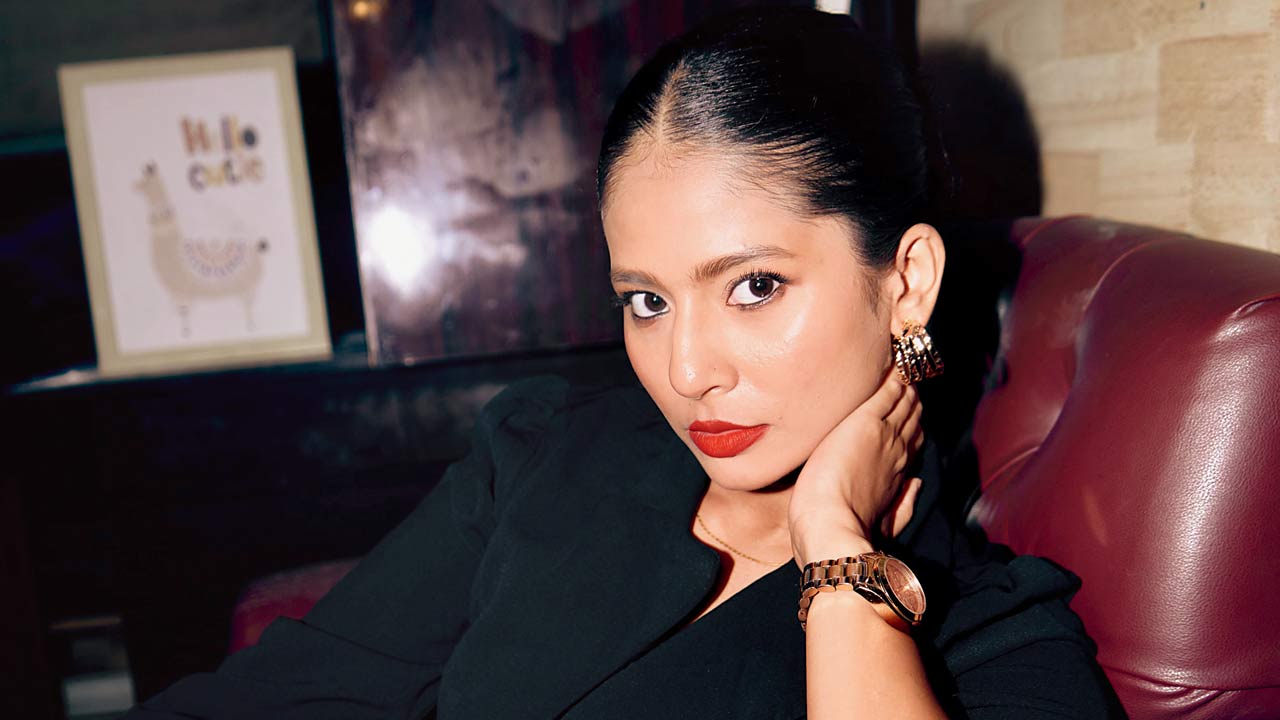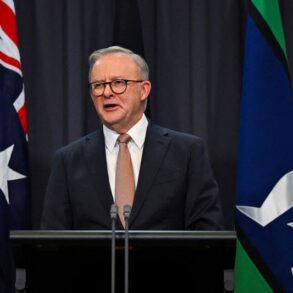Teenage girls sending out online invites to strangers to watch them brawl over a boy—this has to be the very worst of social media. Are we protecting our kids enough from it?

Illustration/Uday Mohite
On an otherwise ordinary evening, the sidewalks outside Bandra’s Rizvi Complex bore witness to the unlikeliest of brawls. Two girls, both aged around 15, threw punches and anything else they could find on the road—including dustbins—at each other. Close to 50 people, mostly teenage boys, had gathered there, egging the girls on. What’s more, they had all been invited there.
ADVERTISEMENT
This was no spontaneous quarrel—it was a full-blown fight night, complete with a poster circulated on social media to invite people to witness the girls grapple with each other. Sources in the know about the clash said the teens were formerly best friends who had a falling out over a boy. But what prompted the girls, both of whom hail from affluent families and attend renowned schools, to take this fight to the streets and publicise it in such a brazen manner? One thing is for sure, there’s an audience for this kind of content—within hours, videos of the fight went viral on social media platforms, gaining hundreds of comments and shares.
“My whole grade was talking about it,” says 15-year-old student Kaashvi, “Even though I wasn’t present in school that day, I heard about it on our grade’s group chat on WhatsApp.”
 Dr Zirak Marker, Dr Meghna Basu Thakur, Kyra Shah and Shilpa Gandhi
Dr Zirak Marker, Dr Meghna Basu Thakur, Kyra Shah and Shilpa Gandhi
Social media algorithms reward provocative content, and posts that stir outrage or invite debate are more likely to go viral. For teenagers, whose identities and self-worth are still forming, this can create a dangerous feedback loop. The more dramatic their behaviour, the more attention they receive, reinforcing the idea that visibility—even for negative actions—is a form of success. Conflict, which might once have played out in private, is now weaponised for clout. What might have been a heated exchange in a school hallway has become a public spectacle.
Is it any wonder then that Australia, in a first for the world, announced this month that it will introduce a law banning access to social media for children under the age of 16 years?
India, too, is witnessing the impact of social media on its youth. According to a 2023 survey conducted by community platform LocalCircles among 46,000 people across the country, about 61 per cent of urban parents reported that their child spends excessive time on social media and has shown signs of aggression.
This was echoed in a study last year at Canada’s Western University, which used brain imaging to reveal that scrolling through social media for hours is changing children’s brain activity, possibly spiking aggression levels.

Devika Khade, content creator
Teenagers mimic what they see,” says Dr Meghna Basu Thakur, Professor and Head of the Department of Psychology and President of Women’s Indian Chamber of Commerce & Industry’s (Maharashtra) Public Service Council.
“In this digital age, the content they consume—including those based on toxic friendships, conflicts, and aggression—has become normalised entertainment. Social media has legitimised these unruly modes of expressions, whether it’s rage or drama, as a means to gain visibility,” she adds.
Dr Thakur first came across the fight videos through some of her students. “They were excitedly showing me clips of these girls fighting, and I found the entire episode deeply unsettling. Watching these videos was a stark reminder of the influence social media has on young minds,” she says.
“When I asked my 15-year-old son why he hadn’t told me about the videos, he casually said, ‘What’s there to tell, this is so common’. It’s proof that this generation has become numb to such public displays of conflict,” admits Dr Thakur.
She emphasises the role of bystanders, many of whom are complicit in encouraging such behaviour. “In psychology, we call this ‘bystander behaviour’. Watching those boys hooting and cheering [in the videos] as the girls fought showed a shocking lack of empathy,” she says, “To address this, we need emotional education in schools and homes—not just through lectures, but through experiential learning.”
Bandra-based content creator Kyra Shah , 21, who studies film at a graduate level in the US, says such public fights are glorified to a greater extent in the West. Social media platform TikTok even has a feature allowing creators to host fights online, with followers betting on who will win. “That kind of normalisation is staggering,” says Shah.
The Bandra brawl raises the question of whether we, too, are headed the same way. Shah shares that in her younger days, she had indulged in her own share of “impulsive, attention-seeking actions”, but adds, “Those actions followed me in the immediate years after, and I’ve often been marked for my impulsive teenage decisions.”
Pop culture and media have a role to play too. Shows targeted at teens and young adults, such as 13 Reasons Why, Euphoria and Riverdale have attempted to address critical issues like bullying and mental health, but their dramatic storytelling can end up glamourising these struggles rather than destigmatising them.
“Shows like 13 Reasons Why romanticise issues like suicide and self-harm, turning them into conversation points among teens,” says child and adolescent psychiatrist Dr Zirak Marker, highlighting unhealthy coping mechanisms that often stem from unchecked exposure to extreme content. He recalls a case where a teenager was part of a WhatsApp group of over 150 girls discussing self-harm: “They were sharing strategies, posting videos, and even advising each other on concealing injuries. This is how peer dynamics and digital platforms spiral out of control.”
For Alishka Sankholkar, 15, the influence of pop culture is clear. “[Many] shows normalise toxic behaviour. I’ve seen so many girls in my class overdramatise things just for attention, because they’ve been influenced by what they watch. Drama becomes a way to stand out.”
There are also teens like Kaashvi whose parents have barred her from watching such shows for precisely this reason. “I haven’t seen shows like 13 Reasons Why, Euphoria, or Riverdale because my parents don’t consider them age-appropriate. Honestly, I’m thankful for that. When I’m angry, I wait for the emotions to cool down before acting. Not all teenagers have the same coping mechanisms,” she says.
This is especially true at a time we’re witnessing a spike in precocious puberty. According to Dr Marker, girls are reaching puberty earlier than ever, experiencing adult emotions at an age when they lack the tools to process them. Add to this, the blurring of boundaries for what constitutes acceptable behaviour.
Shilpa Gandhi, Vice Principal of Jasudben ML School, observes that students are increasingly glorifying actions they would once shy away from. “There’s a been a general shift in the moral standards of this generation,” she notes, “For them [teens], the online applause is important validation to justify even the worst actions.”
One way to combat this vicious cycle is for parents to provide their children with tools to better manage their emotions, and to set boundaries. “As a parent, my children always knew I wouldn’t defend them if they went against basic principles like honesty or respect. This was something that I made very clear to them from the beginning,” says Gandhi.
“Growing up is tough. Friends can be toxic, and drama often feels inescapable, admits Nainika Rao, another 15-year-old, “I usually bottle up my emotions until they blow up. It’s hard, but I’ve never lashed out in public—it’s usually at home, and in front of my family. Talking to my older sister though tough times really helped me.”
Of course, overparenting can take a toll too. Dr Marker explains: “Snowplow parenting—where parents remove every obstacle from their child’s path—has left teenagers unable to cope with loss, frustration, or anger. These stressors, coupled with a lack of emotional education, create a perfect storm for aggressive or impulsive behaviour.”
Balance is key. The focus should be on building emotional resilience, and this burden ought to be shared by schools too, says Dr Milan Balakrishnan, a consultant psychiatrist.
The ability to manage anger, communicate effectively, and empathise with others is rarely taught, leaving teenagers ill-equipped to navigate the pressures of adolescence in a digital world. “Emotional education for boys and girls is equally important—teaching them risk management, conflict resolution, and self-regulation is as crucial as academics,” he says.
3
No. of hours of daily usage post which teenage mental health issues spike
*Source: US journal, JAMA Psychiatry
61%
Indian parents feel excessive social media usage is making their kids aggressive
*Source: 2023 LocalCircles survey
 Subscribe today by clicking the link and stay updated with the latest news!” Click here!
Subscribe today by clicking the link and stay updated with the latest news!” Click here!








